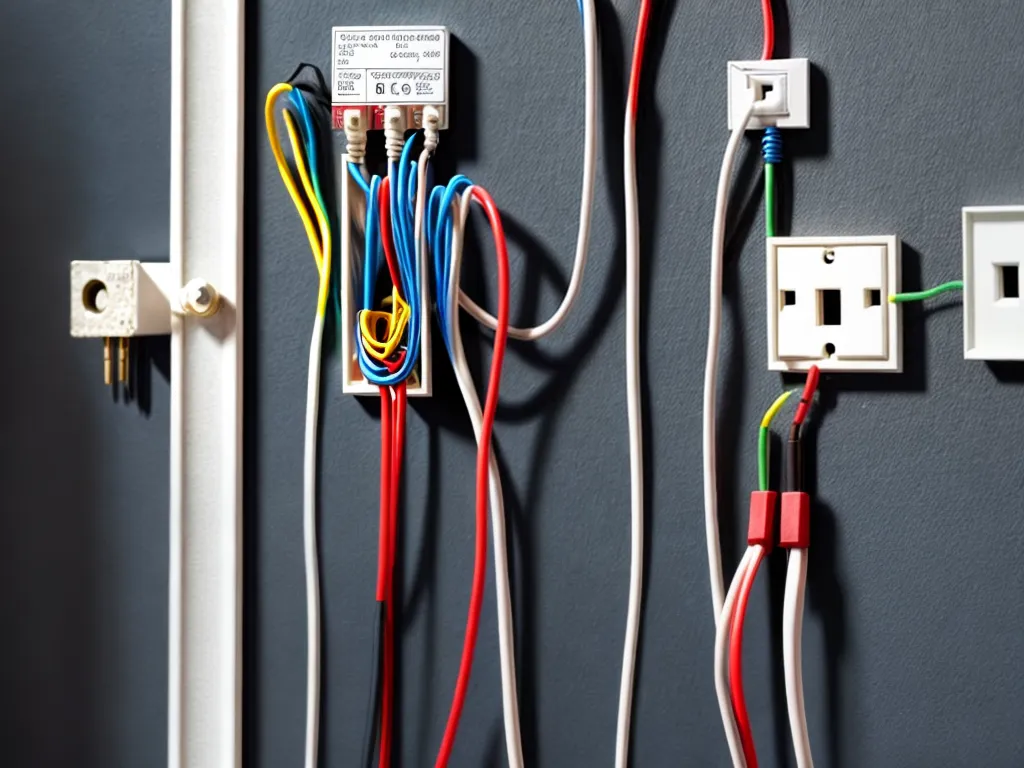
Wiring a home can seem like a daunting task if you don't have prior experience. However, with the right preparation and safety precautions, even a beginner can successfully wire their home. In this comprehensive guide, I will walk you through the entire process step-by-step.
Gather the Necessary Supplies
Before getting started, you'll need to acquire some basic supplies and tools:
- Wire strippers - To strip the plastic insulation off the ends of wires
- Voltage tester - To safely check if wires are live before working on them
- Cable cutters - For cutting wires to length
- Electrical tape - For insulating wire connections
- Wire nuts - To connect multiple wires together
- Conduit or cable staples - For securing wires against walls/studs
In addition, you'll need the correct gauge and type of wire for each circuit:
- 12 or 14 gauge for 15 amp circuits - Bedrooms, kitchen, lighting
- 10 gauge for 20 amp circuits - Bathrooms, major appliances
- 6 gauge for 30 amp circuits - Electric dryer
- 4 gauge for 50 amp circuits - Electric stove/oven
Conduit, junction boxes, outlet and switch boxes, breakers, and fuses will also be necessary. Having a basic understanding of important electrical terms like amps, volts, and watts is helpful as well.
Turn Off Power and Plan Circuits
Before handling any wires, the power must be completely shut off at the main circuit breaker panel. Failing to do this can result in serious electric shock.
Next, you'll want to plan out your home's circuits. Determine which rooms will be on each circuit and map out their layouts. Mark locations for the circuit breaker panel, junction boxes, outlets, switches and any fixed appliances.
Leave room for potential expansion and do not overload circuits. Abide by any local electrical codes and permit requirements.
Running and Securing Wires
With the power off, you can start running cables between the circuit breaker panel and device locations. Here are some tips:
- Use the appropriate gauge wire for the amperage rating of each circuit
- Staple or clip wires every 4-6 feet if running along walls or studs
- Run wires through wall cavities whenever possible
- Use protective conduit for exposed wire runs
- Allow plenty of extra wire at endpoints to make connections
Junction boxes should be installed wherever wires branch off or join together. Follow codes for maximum capacity.
Making Secure Connections
When wires are run to all locations, you can start making connections:
- Strip insulation using wire strippers, avoiding nicking the metal
- For outlet and switch boxes, connect the hot wire to the brass screw, neutral to silver, and ground to green
- Twist wires together tightly using pliers before capping with a wire nut
- Wrap connections with electrical tape for additional protection
- Connect all ground wires to the grounding rod wire
Double check that all bare wire is fully insulated. Even minor exposed metal can cause fires or electrocution if energized.
Installing Breakers and Fuses
With all wiring complete, you can now install the breakers and fuses:
- Match the amperage of the breaker/fuse to the capacity of the circuit wire
- Label each breaker clearly according to which circuit it controls
- Mount breakers securely into the panelboard slots
- Ensure the neutral and ground wires are correctly bonded in the panel
- Check that none of the breakers or fuses are oversized
If using a fuse panel, install the correct fuse type such as time-delay or fast-acting. Don't exceed the panel's total amperage rating.
Safety Checks and Powering Up
Before turning the power back on:
- Verify all connections are tight and insulated
- Inspect for any exposed or damaged wires
- Test all outlets, switches and fixtures to confirm they are wired correctly
- Check that the ground is properly connected in each box
- Flip breakers on one at a time to check for faults
- If any issues, immediately switch off power and troubleshoot
If everything looks good, you can restore power to the full panel. Your new wiring should now be complete and safe. Keep breaker access clear in case of emergencies.
When to Call an Electrician
While the process may seem intimidating, wiring a home safely is completely feasible for a dedicated DIYer. However, some complex tasks are still best left to certified electricians:
- Running a new service panel and main power feed
- Adding 240V circuits for large appliances
- Complex multi-wire branch circuits
- Integrating backup generators or solar power
- Rewiring old homes with outdated electrical systems
Don't take on more than your skill level allows. Better to be safe than risk hazardous wiring faults. Call a professional anytime you feel unsure.
With careful planning and adherence to local codes, even wiring novices can install safe, robust electrical circuits throughout their home. Just take it step by step. If ever in doubt, consult an expert. With the right diligence and respect for electricity, you can wire like a pro.